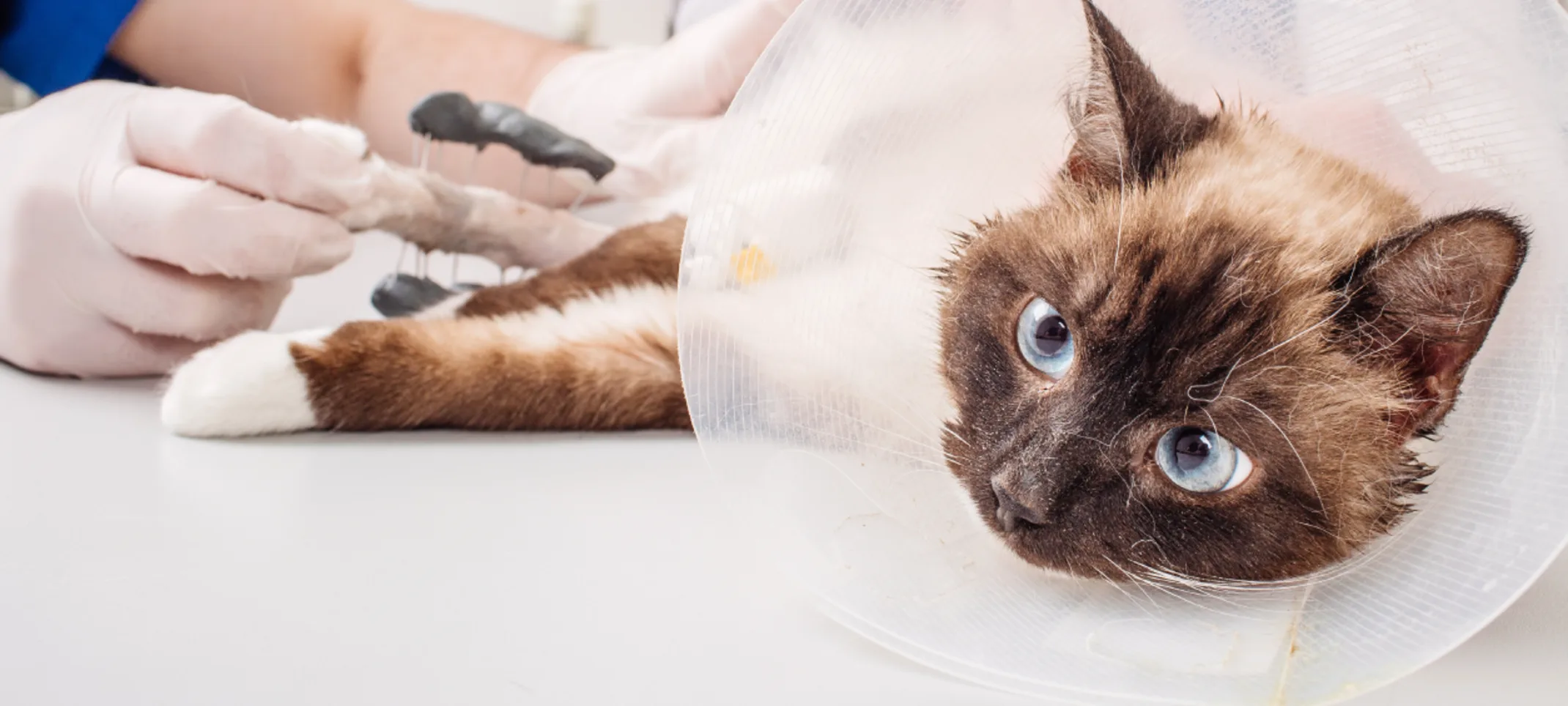Animal Specialty & Emergency Center of Brevard
Bite Wounds
Objects that pierce the skin leaving small hole(s) on the surface of the dog’s skin are considered puncture/bite wounds.

When this occurs, bacteria can enter the wound and cause infection at a rapid rate.
Dog bites can be large punctures involving deep layers of skin and muscle, or they can also appear as gashes, usually around the neck or ear of an animal.
Cat bite wounds tend to be small puncture wounds that become infected very quickly. Cat bite / fight wounds will develop into an abscess within the first 48 hours after the injury has occurred.
There may be bruising, particularly if your pet was picked up by the teeth of a bigger animal and shaken. Puncture/bite wounds can be very painful. The wounds are often concealed by the pet’s coat and may be easily overlooked until an abscess develops a couple of days later.
It is especially important to get your pet to a veterinarian as soon as you discover a puncture wound, whether your pet is bitten by another dog or cat or a different type of animal. Treatment of a puncture wound requires a veterinarian. It involves surgically enlarging the skin opening to provide drainage, after which the area is irrigated with a dilute antiseptic surgical solution.
Signs & Symptoms of Puncture and Bite Wounds
Holes will appear at wound site, as well as bruising
Bleeding from areas of puncture
Pain associated with wounded area
Redness and swelling may also be present at site of puncture/bite wounds
Diagnosis of Puncture and Bite Wounds
Diagnosis begins with a complete history and a physical exam. Your veterinarian will may use any of the following techniques to diagnose the extent of our pets bite injuries:
Your veterinarian will be able to diagnose most wounds by sight on a physical exam.
Radiographs (X-rays) – Your veterinarian may want to rule out any internal bleeding or fractures that may have occurred during the injury process. They will also want to evaluate the depth of the wound, and rule out the possibility of foreign objects left in the wound.
Ultrasound –This is another diagnostic tool used to rule out any internal injuries as a result of the injury process.
Treatment for Puncture and Bite Wounds in Dogs
The objectives in wound treatment are:
Stop the bleeding
Prevent infection
There are a few guidelines that are generally followed in wound treatment:
Preparation of the skin for wound treatment
Cleaning and debridement of the wound
Irrigation of the wound, if needed, before closure or bandage
Wound closure
Bandaging
*These steps are followed after the patient has been stabilized and/or after the patient has been sedated to provide pain management during the treatment process.
Prevent infection
Removing the dead tissue and foreign material in and around the wound is called debriding. This reduces the risk of bacterial infection and should be performed by a veterinarian.
Irrigation with a constant stream of water will help wash away contaminants. This is usually done by the veterinarian.
Deep wounds where the risk of infection is high may be left open to drain. Others may be closed using methods such as stitches, staples, or surgical glue.
Keeping your dog from scratching or excessively licking the wound will help prevent infection. If your pet is sent home with an Elizabethan Collar, it is important that your pet wears it at all times so they do not disturb or infect their wounds – which could have serious consequences.
Your veterinarian may put your dog on preventative antibiotics to combat any potential infection.
If you pet is needs immediate care for a fight / bite wound, please call us at (321) 725-5365.
